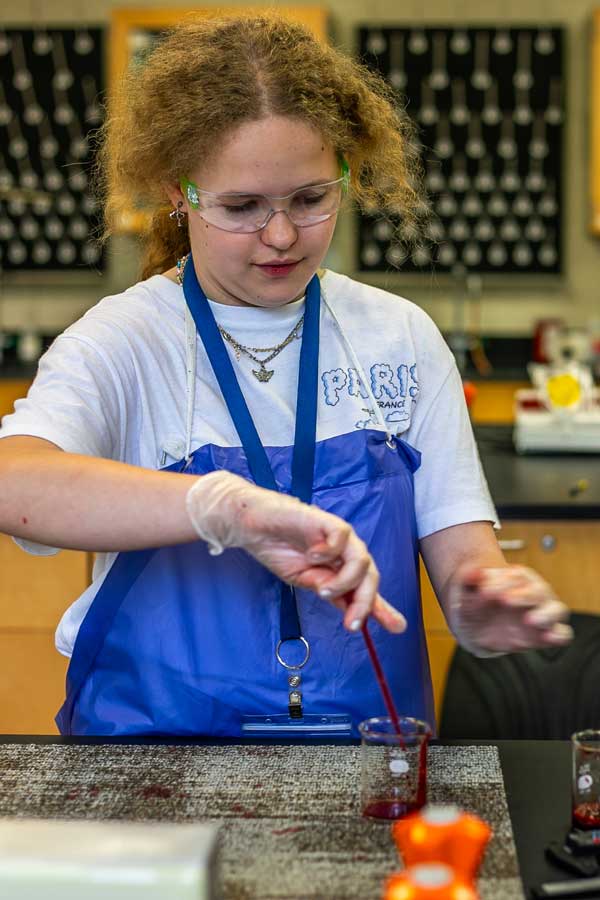Students solve crime and investigate science
CSI camp tackles projectiles, blood spatter, DNA traces and more

Middle- and high school-aged sleuths had the chance to investigate a “crime” and build a case to solve the murder of fictitious Professor Smith at the University of Pittsburgh at Bradford last week.
While the crime was invented, the investigation techniques taught by Dr. Robin Choo, assistant professor of biology, and Dr. Charles Choo, assistant professor of physics, were real.
“I know he really learned a lot,” said Christina Burns, mother of Uriah Hantz, a 13-year-old Floyd C. Fretz Middle School student attending the crime scene investigation camp.
Burns said she and her son both enjoy going to escape rooms and watching crime shows and that he taught her what he was learning throughout the week about handwriting analysis, blood spatter and making shoe castings.
“He was still thinking about it when he was home,” she said.
So were Braylee Barnhill, 12, of Fairview and her cousin Renae Schlopy, 14, who will be a first-year student at Bradford Area High School this fall. Braylee visited her cousin to attend the camp.
“Every day they had a story or two or three,” said Debbie Anthony, Schlopy’s mother.
Desirae Rounsville, a rising senior at Smethport Area High School, said that the hands-on work at camp tied in well with what she has learned in high school, particularly during the physics lessons with Charles Choo.
Charles Choo taught the students about projectile objects using archery and lasers as well as everyday objects like balls of varied sizes. Students also learned about calculating the height something had fallen from given the size and location of its splatter. They used this information to determine that blood from the crime scene likely came from a bloody nose.
A favorite activity of several students was a demonstration of the difference between blood splatters left by a vein (steady) and an artery (spurting) by poking a hole in a water balloon and squeezing it to simulate a beating heart.
Students also enjoyed spending time on a college campus, taking a tour and visiting the university’s CSI House.
Already interested in pursuing an area of law enforcement, students said their camp experiences confirmed their interest.
“I liked putting all the pieces together,” said Peyton Gillespie, 12, a student at Kane Middle School.
Other activities held during the week included obtaining a search warrant, working with campus police to determine what evidence they had gathered, lifting fingerprints, conducting soil analysis and learning about soil microbiology, examining hair and fibers, extracting DNA from samples, and analyzing ink from pens and a note left at the scene.
CSI is one of four Science, Technology, Engineering and Math camps held this summer at Pitt-Bradford. Others are engineering technology, virtual reality and video game programming.